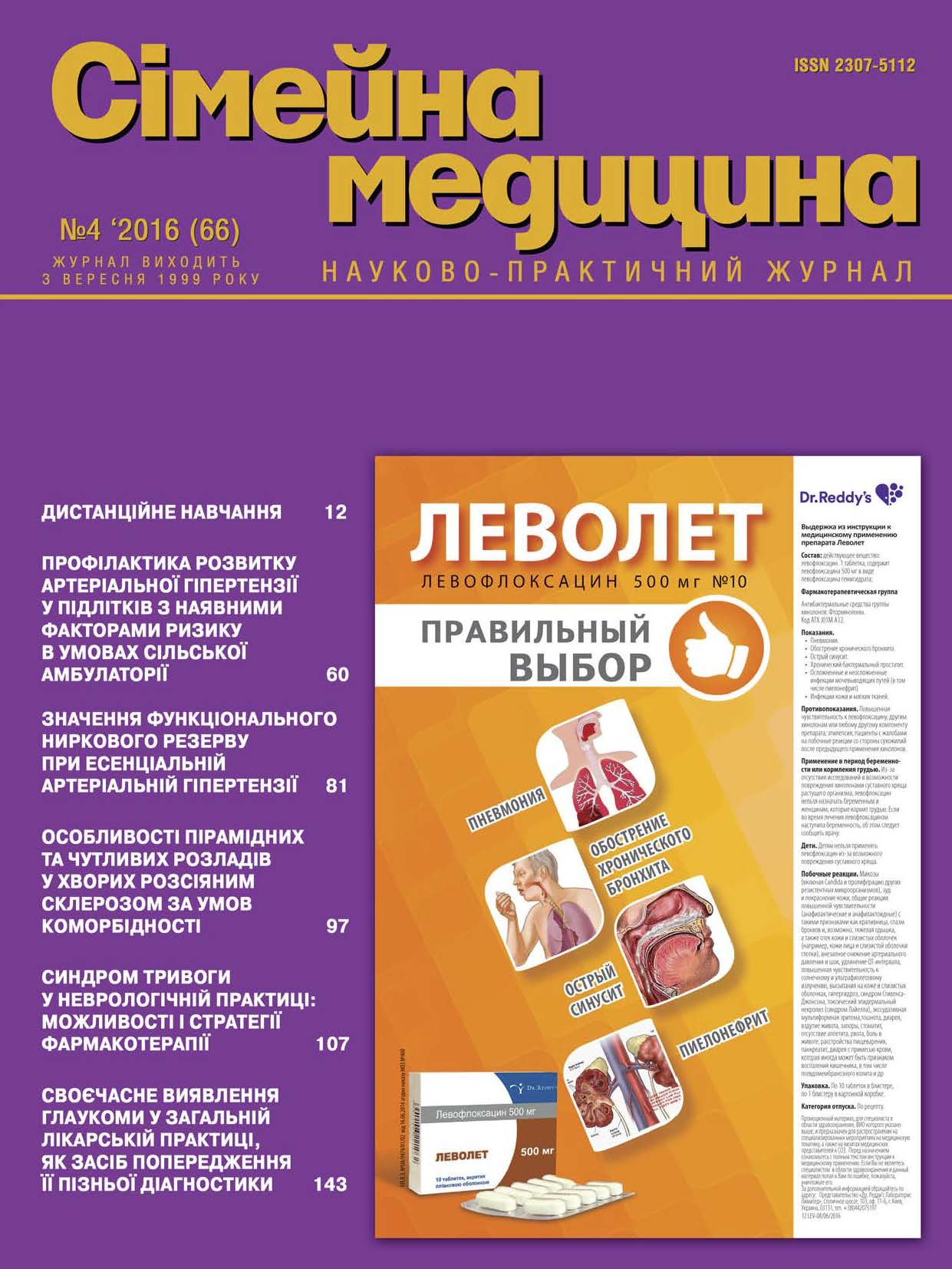Study of Efficacy and Safety of Ginger Root Extract in Treatment of Patients with Low Back Pain
##plugins.themes.bootstrap3.article.main##
Abstract
The objective: to study efficacy and safety of treatment with herbal formulation of standardized extract of ginger root in patients with low back pain; to study impact of the formulation on the dynamics of inflammation process indices, hepatic and renal markers, purine, carbohydrate and lipid metabolism.
Patients and methods. The study involved 35 patients (28 women and 7 men) aged between 30 and 80 years with primary LBP syndrome. The treatment was provided using herbal formulation of standardized extract of ginger root at dose of 300 mg twice daily during two months. We evaluated efficacy of the formulation using VAS, Oswestry, Roland-Morris, McGill questionnaires. We analyzed effect of the drug product on cytokines levels (IL-1β, IGF-1), NO, CRP, ESR, metabolism indices (lipid, carbohydrate, liver function markers, uric acid levels).
Results. By the end of the study, in 2 months of the treatment, the VAS parameters had statistically significantly decreased from 55,71±2,98 mm to 23,17 mm±2,38, Oswestry parameters – from 16,66±1,09 to 8,69±1,06, McGill parameters – from 8,49±0,73 to 3,09±0,4, Roland-Morris parameters – from 5,37±0,54 to 2,22±0,33. We observed a statistically significant reduction in CRP, ESR, proinflammatory cytokines (IL-1β), free radical (NO), as well as cholesterol and glucose. The study did not demonstrate any dynamics in such laboratory parameters as bilirubin, ALT, AST, creatinine and uric acid.
Conclusions. Based on the study results we concluded that the standardized ginger root extract was effective and safe in treatment of patients with LBP. In the course of the treatment, the patients demonstrated reduction in pain intensity by 58%, life quality improvement by 48%, psycho-emotional state improvement by 59%, and vital activity improvement by 58%. We observed the anti-inflammatory effect of ginger root extract exerted by the drug product through degrading indices of CRP, ESR, proinflammatory cytokine IL-1β, and NO.
##plugins.themes.bootstrap3.article.details##

This work is licensed under a Creative Commons Attribution 4.0 International License.
Authors retain the copyright and grant the journal the first publication of original scientific articles under the Creative Commons Attribution 4.0 International License, which allows others to distribute work with acknowledgment of authorship and first publication in this journal.
References
Шуба Н.М., Воронова Т.Д., Карташова Ж.В. Оценка эффективности оригинального глюкозамина сульфата и декскетопрофена в лечении пациентов с первичным синдромом боли в нижней части спины. – К.: Здоров’я України № 17, 2006.
Шуба Н.М. Біль в нижній частині спини – важлива проблема для лікаря загальної практики // Сімейна медицина. – 2007. – № 1. – С. 11-16.
Мазуров В.И., Беляева І.Б. Боль в нижней части спины // Новые Санкт-Петербургские врачебные ведомости. – 2003. – №4. – С. 29-36.
Мазуров В.И., Беляева И.Б. Применение Структума в комплексном лечении болей в нижней части спины / Структум. Новые возможности в лечении остеоартроза и остеохондроза. – М., 2004. – 24 с.
Kuijpers T, van Middelkoop M, Rubinstein SM, Ostelo R, Verhagen A, Koes BW, et al. A systematic review on the effectiveness of pharmacological interventions for chronic non-specific low-back pain. Eur Spine J., 2011;20:40-50.
Якименко Е.А., Закатова Л.В., Кравчук О.Е. Изучение эффективности и безопасности применения Зинаксина в комплексной терапии больных остеоартрозом // Український терапевтичний журнал. – 2005. – № 1. – С. 64-67.
Altman R. et al. Effect of a Ginger extract on knee pain in patients with osteoarthritis // Arthrritis Rheum. – 2001. – Vol. 44, № 11. – P. 2531-2538.
Борткевич О.П., Поскрипко Ю.А., Тимошенко О.Ю. Зинаксин с позиции доказательной медицины // Український ревматологічний журнал. – 2007. – № 4.





